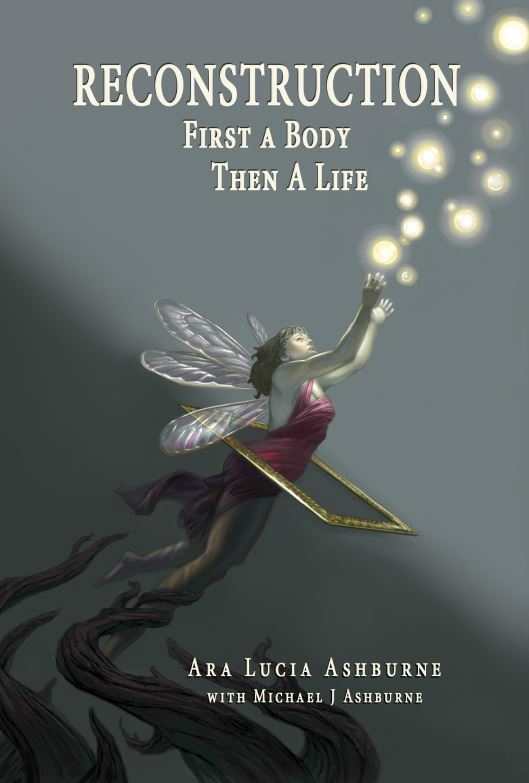
Reconstruction
First a Body, Then a Life
This important book is a learning experience for doctors and nurses, as well as an informative lesson for any patient facing a potentially risky procedure.
A vibrant woman hangs on the brink of life and death in this candid look at the horrifying results when a medical procedure leaves a patient fighting for her rights. Reconstruction: First a Body, Then a Life is a gripping memoir and an exploration of the human will to survive, by Ara Lucia Ashburne. This incredible journey reveals the inner turmoil and the impenetrable darkness that encompassed her while she lay in the hospital drugged and contemplating suicide.
After surgery to remove an ectopic pregnancy following in vitro fertilization, flesh-eating bacteria attack her body due to an undetected perforation of her bladder, taking out Ara’s abdominal wall and nearby affected areas. Repeated removal of damaged tissue structure leads to an involved reconstruction. Though she will never be the same physically, her ability to overcome this monumental setback is an inspiration for anyone who has struggled to surpass nearly insurmountable obstacles. She not only lives through this threatening ordeal, she far exceeds what the average person would have been able to achieve.
Ara’s husband, Michael, collaborated on this complicated endeavor, sharing e-mails and personal information. What went on while Ara was unable to communicate with her family and colleagues is juxtaposed with her complex memories as she sinks into a dreamlike state of unconsciousness, a private realm that seems frighteningly real. These segments are subject to interpretation—strange psychic manifestations while under powerful medications combined with symbolical renderings of traumatic events that transpired. Interspersed are medical documents consisting of observations, orders, and notes, which tend to be repetitious. These excerpts, while necessary to provide a behind-the-scenes perspective, do not always enhance the quality of her text. This methodical presentation of objective data is in sharp contrast to the patient’s impressions, emotions, and pain-wracked anguish.
Ara’s description of an out-of-body experience indicates that she almost lost the battle with this deadly organism:
I hear beeping on the outside. I fall and fall and fall and fall. My spirit lifts above my body. Though I can’t see my face, I see my body in a medical room with Yvonne beside me. I pull on my spirit, but it’s locked into place. The machines are holding me. I slam back into my body with fury and frustration.
A learning experience for doctors and nurses, as well as an informative lesson for any patient facing a potentially risky procedure, the book serves yet another valuable purpose by issuing a warning: not all professionals in the medical field are able to communicate effectively, and some exercise a dangerous lack of judgment under stressful circumstances.
Ara’s story is an example of motivation, drive, and stamina emerging when weaker individuals would give up and die. An educated winner at her best has evolved from a lethal situation that could have snuffed out her brilliant mind in its prime.
Reviewed by
Julia Ann Charpentier
Disclosure: This article is not an endorsement, but a review. The publisher of this book provided free copies of the book and paid a small fee to have their book reviewed by a professional reviewer. Foreword Reviews and Clarion Reviews make no guarantee that the publisher will receive a positive review. Foreword Magazine, Inc. is disclosing this in accordance with the Federal Trade Commission’s 16 CFR, Part 255.
